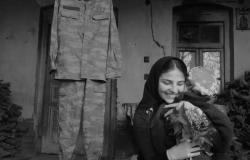Operationalising a HDP Nexus Approach through Conflict-Sensitive Programming – An example from a multi-country Children and Armed Conflict programme

This is the fifth chapter in a forthcoming e-book, entitled 'The Triple Humanitarian, Development and Peace Nexus: In Context and Everyday Perspective', edited by Marina Ferrero Baselga and Rodrigo Mena. Chapters are being serialised on Global Policy over the coming months.
Plan International has a global commitment to work on the Humanitarian, Development, and Peace (HDP) nexus to ensure saving lives, addressing root causes, and building peaceful and resilient societies in an integrated and coordinated way. The work takes an area-based approach, which means implementing humanitarian, development, and peacebuilding activities at the same time in the same location. Still, often it is one approach that is more dominant. The majority of projects fall within “...”. Nevertheless, while not primarily a peacebuilding entity, Plan International fosters "little p" peace through promoting social cohesion, enhancing the skills and resources of local actors, and supporting an enabling environment for women and young girls to impactfully contribute to building and sustaining peace.
Furthermore, Plan International strives to incorporate conflict sensitivity in its activities. Indeed, conflict sensitivity is crucial for operationalising the triple nexus or HDP approach. This article provides insight into how a triple nexus approach has been guided by conflict sensitivity in a multi-country Children and Armed Conflict (CAAC) programme.
Conflict sensitivity is generally understood as not exacerbating violence and conflict, closely related to the Do No Harm principle. However, conflict sensitivity moves beyond Do No Harm, by, where possible, maximizing positive impacts on conflict dynamics. There is a distinction to be made between peacebuilding - where the primary objective and expertise is peace - and maximising positive effects on peace that are within reach of any given development or humanitarian programme. A welcome effect of the HDP nexus approach is that it seems to pave the way for a revival of the positive, more proactive side, of conflict sensitivity. Humanitarian, Development and Peacebuilding actors working according to the HDP nexus approach are increasingly making themselves aware of the potential positive contribution to peace that lies within reach of the work that they do and are adjusting their programming to maximise their contributions to peace within their mandates. Thus, this article further explores how non-governmental actors can make use of a conflict-sensitive approach to contribute to and sustain peace.
The Children and Armed Conflict Programme
Only in 2021, the United Nations verified almost 24,000 grave child rights violations in the context of armed conflict across the world (1). These experiences leave lifelong scars impacting child and youth development, health, education, economic prospects, social networks, identity, and mental wellbeing. Beyond these individual experiences, children and youth are equally experiencing the collective consequences of shattered societies, damaged social fabrics and destroyed infrastructure. Furthermore, the breakdown of economies and local markets may push children, youth, and their communities to resort to negative coping mechanisms, including the worst forms of child labour such as the recruitment and use of children by armed forces and armed groups.
It was against this backdrop that Plan International developed a 4.5-year programme on Children and Armed Conflict (CAAC) targeting three countries to protect children and youth from the impact of armed conflict while strengthening their resilience to cope with current and future adversities. The three countries encompass the Central African Republic (CAR), Tanzania (targeting Burundian refugees) and Myanmar. During the implementation period of the CAAC programme, the United Nations Secretary General’s Annual Reports on Children and Armed Conflict verified more than 2,800 grave child rights violations in CAR and more than 2,100 grave child rights violations in Myanmar. These figures include the killing and maiming of children, recruitment and use of child soldiers, and use of children for profit, (sexual) violence against children, abduction of children, attacks on schools and hospitals and the denial of humanitarian access to children.
The CAAC programme consisted of country-specific initiatives following a common focus and global approach. The three target countries experience protracted crises, with dimensions of displacement resulting directly from the existence of violent conflict. The CAAC programme moved beyond a humanitarian vision with a full spectrum approach, working at the nexus of humanitarian, development, and peacebuilding efforts to promote the protection, rights and gender equality of children and youth. Furthermore, the CAAC programme implemented approaches that align with the three global frameworks on Youth, Peace and Security, Children and Armed Conflict, and Women, Peace, and Security.
While the CAAC programme applied approaches that span across the humanitarian and development nexus, it also clearly contributed to peace (“little p”). The CAAC programme included activities that aimed first and foremost to build peaceful societies in contexts of protracted crisis. These activities focused on agency and the transformation of relationships, building capacities for peace, and conflict prevention and management. In addition, the programme promoted social cohesion and resilience, as well as transformed gender norms by removing barriers that keep girls and young women from achieving their full potential and exercising their rights. Moreover, building the resilience of children and youth, as well as their communities, was vital to ensure that they could cope with and adapt to the significant shocks and stresses they face currently and in the future.
There have been positive developments in both CAR and Myanmar to protect children in armed conflict in the past years. For example, several Action Plans were signed between the UN and armed groups in CAR and Myanmar to end and prevent grave violations against children, legal frameworks to protect children in armed conflict were developed and many children were released of their forced enlistment in armed forces and armed groups. Despite substantial developments toward robust reintegration and protection services for affected communities at large, and specifically for surviving and/or children at risk, much remains to be done to protect children and youth affected by armed conflict.
Conflict Sensitivity guiding the programme approach
Conflict sensitivity must be continually assessed, and programmes/projects adapted. Particularly in complex situations within the HDP nexus, the evolving conflict dynamics must be regularly reflected upon so that adjustments can be made. It is important that work along the HDP nexus, particularly if it entails provisions of basic needs, does not add to the dividers in communities. Conflict sensitivity also entails navigating intricate and multifaceted scenarios, demanding difficult choices, and weighing trade-offs. It is essential that these scenarios are documented and followed up on, and that any adjustments are captured in monitoring, evaluation, and learning. It is equally essential to include conflict sensitivity indicators in the programme, through which it will be possible to measure the organisation’s contribution to more peaceful and just societies.
In CAR, adjustments were made regularly during the implementation to ensure that conflict sensitivity was considered and to minimize potential agitation, clashes, or frustrations within and between communities. For example, during activities that required sensitive discussions on topics such as recruitment, release, and reintegration of former CAAFAGs, Plan International CAR staff ensured a calm and focused environment for group discussions to minimize the potential for blaming various ethnic/religious groups for being the cause or contributing to the recruitment of children into armed groups and armed forces. In Myanmar, conflict sensitivity was at the forefront of the implementation of all activities. In the first year, a comprehensive conflict analysis was conducted with the support of the Myanmar Institute of Peace and Security which identified existing tensions among target communities. These were primarily related to the ongoing civil conflict between Rakhine and Muslim populations. Systemic poverty plays a significant role and government restrictions (such as movement restrictions on Muslim populations and COVID-19 quarantines) have also heightened tensions. Through hiring local staff, the project team is abundantly aware of the context and the situation including gender inequalities and the relations between different communities. Through regular feedback and focus group discussions, the project team learned about delicate situations and could adjust activities as needed. In Tanzania, the project implementation integrated a community engagement approach, ensuring that the community members from both host and refugee communities had the opportunity to share experiences and provide feedback on programme implementation. This also supported the creation of a safe environment for the implementation of the activities, while also considering various factors that would potentially impact the tensions among groups of people within and outside the camps.
In light of the experiences captured from the CAAC programme, a few tips from a nexus perspective can be highlighted:
- Combine prevention and response efforts. A holistic approach is preferable to protect children and youth from harm and ensure those affected can access necessary services.
- Empower youth to lead prevention and peacebuilding efforts. With basic training, organisation, and a few resources, youth can lead activities in their communities that deliver messages on peace, bring conflicting groups together, and protect children.
- Enhance opportunities for youth to participate in decision-making spaces about peacebuilding. Advocate for spaces in councils or national forums related to peacebuilding. Identify and address barriers to young women’s participation and provide additional support to ensure they can participate in a meaningful and impactful manner.
- Include interventions that meet immediate needs and that improve livelihood opportunities.
- Collaborate closely with authorities on local and national levels to enhance ownership, safety, and sustainability.
- Build flexibility and contingency planning. Recognise that activities will be delayed, cancelled, or adapted during the implementation period. Conduct regular assessments of the context and child protection risks and adapt the project activities as needed.
Concluding remarks
Conflict sensitivity, localisation, context-specificity, rights-based approaches and sustainability, when put into action through targeted and complementary planning and programming across the triple nexus, can become the building blocks for contributing to, and sustaining peace. To increase interactions across and within the HDP, there are a range of options to consider, including:
- Shared, joint or ‘joined-up’ context and conflict analyses across the nexus.
- Outcome-based planning, ideally based on collective outcomes.
- Flexible, responsive and agile programming that can adapt to an evolving context.
- Scaling up capacity for context and conflict analysis and incorporating conflict sensitivity into programme design.
- Advocating for financing across humanitarian, development and peace programming, while safeguarding financing to respond to immediate humanitarian needs as they arise.
- Adherence to the ‘Do No Harm’ principle as well as Accountability to Affected Populations, the Centrality of Protection, “doing more good” when possible, while responding to the local context and the voices and capacities of local people and communities.
In short, frameworks for analysing conflict sensitivity of development, humanitarian or peace action can help provide a common language across the HDP nexus for talking about the negative and positive effects that programming has on conflict or conflict-prone contexts. Ultimately, conflict sensitivity strengthens the peace pillar of the HDP nexus.
Maria Sommardahl, Senior Advisor on Gender Equality, Peace and Conflict at Plan International Sweden. The chapter was written in collaboration with Plan International Netherlands.
Maria Sommardahl is currently working as Senior Adviser on Gender Equality, Peace and Conflict at Plan International Sweden and between 2020-2022 she was Director for Humanitarian Affairs. Maria has vast experience in humanitarian assistance, development cooperation, and human rights work within research, policy and practice from leading roles at field and HQ levels in crises and conflict settings. Maria has previously worked with NRC, GenCap and ProCap as well as with the joint NorCap and UNDPPA Peace Mediation Team. Before joining NRC and its rosters, she was Director at the Nansen Center for Peace and Dialogue. Maria is also a member of the Nordic Women Mediators (Norway), through which she takes on mediation and negotiation assignments.
Maria has also published articles, such as in Promoting Peace Through International Law, Oxford University Press and written several book reviews, among others, on War by Contract: Human Rights, Humanitarian Law and Private Contractors, Nordic Journal of International Law.
The article does not necessarily represent or reflect the viewpoints of the entire federation of Plan International.
Photo by David Tandilashvili
Notes
(1) Statistics Should Never Overshadow the Individual Suffering of Children in Armed Conflict, “We Must Redouble Efforts to End Grave Violations” – Office of the Special Representative of the Secretary-General for Children and Armed Conflict.


